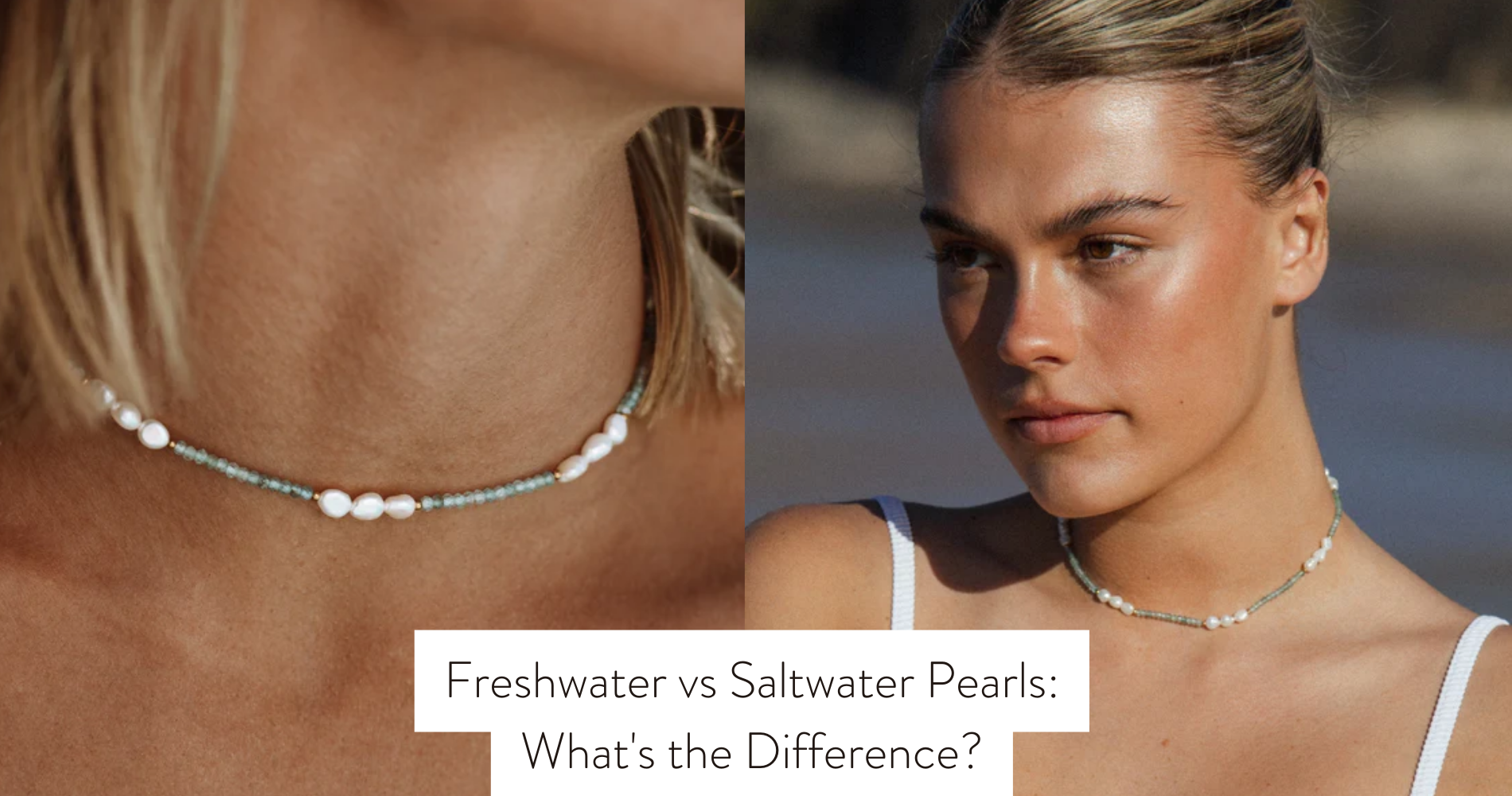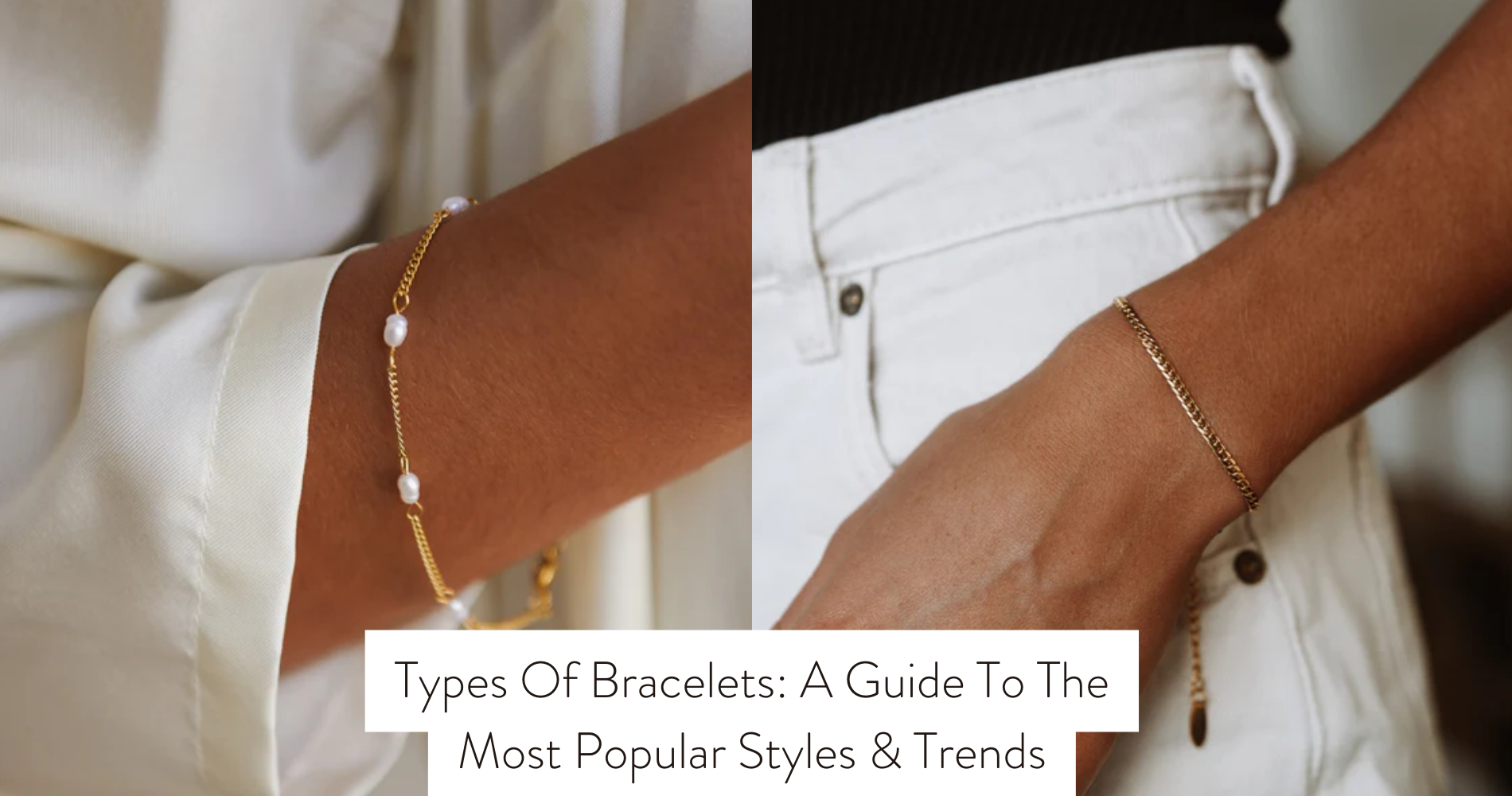
Freshwater vs Saltwater Pearls: What's the Difference?
Looking to add some elegance to your jewelry collection? Wondering about the difference between freshwater and saltwater pearls? Look no further!
In this article, we'll break down the distinctions between the two types of pearls so you can make an informed choice. From their origins to their appearance, rarity, and value, we'll cover it all.
So, sit back, relax, and get ready to dive into the world of freshwater versus saltwater pearls!
Origins of Freshwater and Saltwater Pearls
You might be wondering where freshwater and saltwater pearls come from. Well, let's dive into it!
Freshwater pearls, including the popular freshwater pearl necklaces, are cultured primarily in rivers, lakes, and ponds, with China being a notable source. The cultivation process for freshwater pearls entails the insertion of a small piece of tissue into the mollusk, leading to the development of a pearl sac around it. These pearls are celebrated for their distinct shapes and varying sizes, spanning from round to baroque.

On the other hand, saltwater pearls are produced by oysters in oceans and seas, primarily in Japan, Australia, and Tahiti. The cultivation process for saltwater pearls is similar, but the oysters used are different.
The environmental impact of pearl cultivation can vary depending on farming practices, but efforts are being made to minimize any negative effects on the ecosystem.
Physical Characteristics and Appearance
When it comes to physical characteristics and appearance, freshwater pearls and saltwater pearls have noticeable differences.
One of the primary distinctions lies in their luster and coloration. Freshwater pearls, such as the elegant gold freshwater pearl choker, often exhibit a softer, more matte luster, while saltwater pearls boast a brighter, more reflective sheen.

In regard to coloration, freshwater pearls showcase a broader spectrum of hues, encompassing white, pink, lavender, and even metallic shades. Conversely, saltwater pearls are renowned for their timeless white and cream coloration.
Another difference is in the texture and surface quality. Freshwater pearls often have a slightly bumpy or rippled texture, while saltwater pearls have a smoother and more uniform surface.
These distinctions in luster, coloration, texture, and surface quality contribute to the unique appearance of freshwater and saltwater pearls.
Size and Shape Variations
Typically, freshwater and saltwater pearls come in a variety of sizes and shapes.
When it comes to size, freshwater pearls tend to be smaller compared to saltwater pearls. Freshwater pearls range from 2mm to 16mm in diameter, while saltwater pearls can reach up to 20mm.
As for shape, both types can have round, semi-round, oval, button, drop, and baroque shapes. However, freshwater pearls are more likely to have irregular shapes due to the cultivation process.
In terms of color variations, freshwater pearls are available in a wide range of colors, including white, pink, lavender, and even metallic shades. Saltwater pearls, on the other hand, come in more limited color options, such as white, cream, and golden hues.
Regardless of their size and shape, both freshwater and saltwater pearls hold cultural significance and are cherished for their beauty and elegance.
Rarity and Value Differences
Interestingly, freshwater and saltwater pearls differ in terms of their rarity and value. Saltwater pearls, particularly those from oysters like the Akoya and South Sea pearls, are considered more valuable and rare than freshwater pearls. This is mainly due to the difference in production and cultivation methods.
Saltwater pearls are typically cultured by inserting a bead nucleus into oysters, resulting in a higher success rate of pearl formation. On the other hand, freshwater pearls are cultured by inserting small pieces of tissue into mussels, which can produce multiple pearls at once.
The rarity and value of pearls also depend on their size, shape, color, and luster. Additionally, saltwater pearls have a greater cultural significance and are often associated with luxury and elegance.
However, it's important to consider the environmental impact of pearl cultivation, as excessive farming practices can harm marine ecosystems.
Choosing the Right Type of Pearl for You
If you're looking to choose the right type of pearl for you, there are a few factors to consider.
One important factor is the cultural significance of the pearls. Saltwater pearls, such as Akoya and South Sea pearls, are often associated with luxury and elegance. They've been treasured by royalty and are considered a symbol of status and wealth. Freshwater pearls, on the other hand, are more affordable and versatile, making them a popular choice for everyday wear.
Another factor to consider is the care and maintenance required for each type of pearl. Saltwater pearls are more delicate and require gentle cleaning and regular restringing to maintain their luster. Freshwater pearls, on the other hand, are more durable and require less maintenance.
Ultimately, the right type of pearl for you depends on your personal style, budget, and lifestyle.
Frequently Asked Questions
Are Freshwater Pearls More Affordable Than Saltwater Pearls?
Freshwater pearls tend to be more affordable than saltwater pearls. This is because freshwater pearls are produced in greater quantities using a different method. Factors like rarity, size, luster, and origin also influence the pricing of both types.
Can Freshwater Pearls Be as Round and Lustrous as Saltwater Pearls?
Freshwater pearls can be just as round and lustrous as saltwater pearls. They possess a natural beauty that rivals their saltwater counterparts, making them a more affordable and equally stunning option.
Are Saltwater Pearls Always More Valuable Than Freshwater Pearls?
Saltwater pearls are not always more valuable than freshwater pearls. Rarity plays a role, but other factors like size, shape, color, and luster also influence value. Don't assume saltwater is always better.
Do Freshwater Pearls Come in a Wider Range of Colors Than Saltwater Pearls?
Freshwater pearls, compared to saltwater pearls, come in a wider range of colors. The natural and cultured differences in pearl formation, along with water temperature, influence the beautiful array of colors found in freshwater pearls.
Are Freshwater Pearls More Durable and Resistant to Damage Compared to Saltwater Pearls?
Freshwater pearls are generally more durable and resistant to damage compared to saltwater pearls. This is due to the different freshwater pearl cultivation techniques used, which result in stronger pearls than those produced through traditional saltwater pearl farming methods.
Conclusion
So, when it comes to freshwater vs saltwater pearls, it's all about personal preference. Both types have their own unique origins, physical characteristics, and value differences.
Whether you prefer the variety and affordability of freshwater pearls or the classic elegance and rarity of saltwater pearls, there's a perfect choice out there for everyone.
So go ahead and choose the type of pearl that speaks to you and adds that perfect touch of beauty to your collection.



















Leave a comment
This site is protected by hCaptcha and the hCaptcha Privacy Policy and Terms of Service apply.